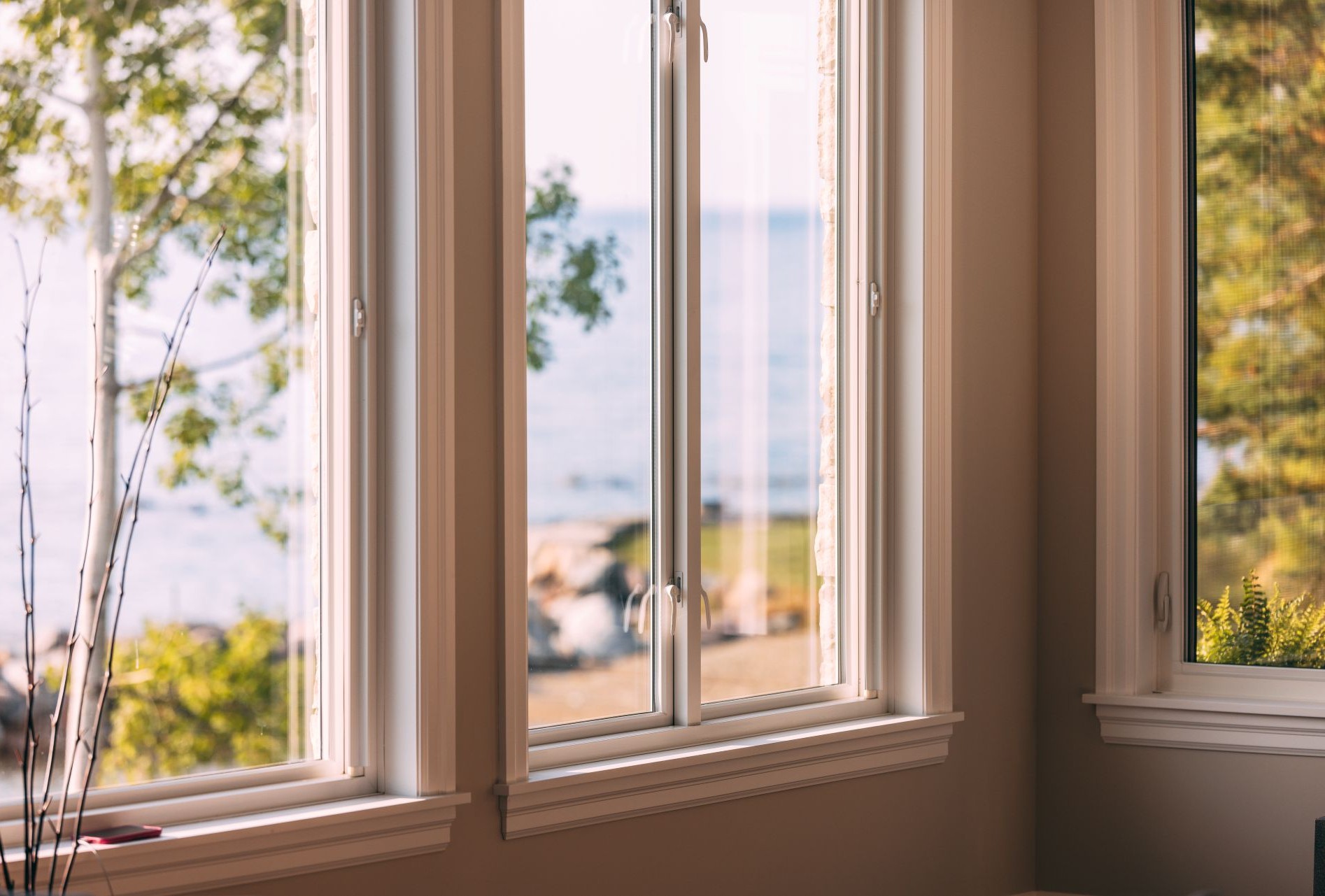
Window Parts, Materials & Components
How to Tell If Glass Is Tempered: 7 Best Methods
Ever wondered if the glass in your window, glass door, tabletop, or shower door is tempered? You're not alone! Why? Because tempered glass looks almost identical to regular glass, and it can be quite difficult to distinguish them. But it's very important to learn to do this to ensure your home is safe!
So, how to tell if glass is tempered? Nothing easier than that! This blog post is your ultimate guide on checking whether glass is tempered or not, so read on!
Key Takeaways
- Check the edges: tempered glass has smooth, slightly rounded edges, unlike the sharp edges of ordinary glass.
- Look for a stamp: authentic tempered glass often includes a small manufacturer’s mark or CPSC-compliant stamp in the corner.
- Watch for imperfections: tiny scratches or surface particles from the manufacturing process can be signs of tempering, not flaws!
- Use polarized sunglasses: stress patterns like lines or dots may appear when you look at tempered glass through polarized lenses.
- Listen or test (carefully!): tap it for a ringing sound, use heat, or cut a line (only if the glass is being discarded) to observe its reaction.
- Distortion: tempered glass often looks “wavy” or distorted due to the way it’s made.
7 Methods That Can Help You Identify Tempered Glass

Tempered glass, also known as toughened glass, is a type of safety glass, like laminated glass.
Similar to regular glass and heat-strengthened glass, it undergoes a heating process. However, immediately after, it also undergoes a rapid cooling process. This aims to strengthen the glass, making it 4-5 times stronger than annealed glass of the same thickness.
Moreover, tempered glass breaks into small shards that significantly reduce the risk of injuries. This makes it perfect for windows, shower doors, glass doors, refrigerator shelves, tabletops, or window walls.
You can try different methods to tell if the glass is tempered, which we'll discuss below. However, keep in mind that even if tempered glass is strong, the entire glass sheet can break if the edges are damaged or if you try to cut it.
1. Check for Smooth Edges
Examining the edges can help identify tempered glass. Unlike ordinary glass, which has sharp edges, tempered glass features a very smooth finish and slightly rounded edges. You can run your fingers along the glass edges to feel their smoothness and evenness.
If you have access to both a known regular glass piece and the suspected tempered one, compare the edges side by side to better spot the difference.
Be careful when handling the edges of regular glass, as it can cut skin easily.
2. Identify the Stamp of Authenticity

Genuine tempered glass should have a stamp of authenticity or a sandblasted marking, especially if you purchased the glass directly from the manufacturer. This is the best and most reliable method to identify tempered glass. This stamp shows compliance with safety (Consumer Product Safety Commission - CPSC) standards and the manufacturer’s name. It proves whether the panel is tempered or untempered glass.
This stamp is usually very small and found in one corner of the glass sheet. This is one of the reasons why this method doesn't always work. If we're talking about a window, for example, the stamp may be covered by the frame, so you won't be able to see it. In this case, you'll have to try other methods to confirm if the glass sheet is tempered.
To be compliant with CPSC standards, the stamp must include the designation CPSC 16 CFR 1201 CAT II. This marking ensures the glass meets stringent safety requirements and can withstand significant impact without breaking into dangerous shards. A missing stamp could indicate the glass is not genuinely tempered.
Keep in mind that some manufacturers may use abbreviations or a logo instead of full compliance codes, so it's best to familiarize yourself with different formats. Moreover, if the glass is older, the stamp might have faded or worn off, especially if it's been exposed to sunlight.
3. Look for Visual Cues and Surface Imperfections

Yes, you heard that right! In the glass industry, surface imperfections don't indicate that the glass is of low quality or non-tempered. In fact, if you notice scratches on the surface, it's highly likely that the glass sheet is tempered. Why?
Well, during the tempering process, the instruments used to handle the glass sheets can leave tiny marks on their surface. Moreover, tiny particles can remain on the surface if the rollers aren't cleaned properly before the glass is heated, so the particles can melt and fuse to the glass surface.
Ultimately, these small particles and marks confirm the glass has undergone the proper tempering process and meets safety standards.
Additionally, tempered glass may look slightly “wavy” due to the way it’s manufactured.
4. Look at the Glass Through Polarized Glasses

Another great method to confirm if the glass is tempered is by looking at it through polarised sunglasses.
Have you ever worn sunglasses in a car? If so, you've probably noticed that car windows appear to have lines or dots on the surface when looked at through sunglasses, right? Well, that's what tempered glass looks like through polarised glasses. These lines and dots are formed during the tempering process by machine rollers and cannot be seen with the naked eye.
Keep in mind that it's best to try this method in bright sunlight or with a backlight for better visibility of the stress patterns.
5. Try the Tap Test
The tap test is a practical method to determine if glass is tempered. All you have to do is gently tap the glass with a coin, for example: tempered glass emits a clear, ringing sound due to its higher frequency vibration, distinctly different from the dull thud of ordinary annealed glass.
However, remember that the sound can be affected by the mounting or framing of the glass. A window pane that is tightly secured may have a slightly different sound than a tabletop, for example, even if it's made of the same type of glass.
6. Try the Score Test

The score test involves using a window-cutting tool to score a line on the glass. This method helps determine whether the glass is tempered by observing what the cut looks like. Scoring a line on tempered glass typically results in a bumpy and uneven line, while non-tempered glass yields a clean line.
However, we do not recommend scoring a line on the glass unless that glass is going to be cut or thrown away, because if you damage tempered glass, the entire sheet may shatter into small pieces.
For example, if you're planning to replace your windows, you are happy with the glass panes you've had until now, and want to check whether it's tempered or not (so you can choose the same glass type for your new windows), you can definitely use the score test. Otherwise, it's best to try other methods or seek professional help - while tempered glass is strong, it can easily break if damaged at the corners, for instance.
7. Try the Heat Resistance Test

Before providing more details about the heat resistance test, we should mention that we do not recommend trying it on glass surfaces that you plan to continue using, as it can damage them.
Tempered glass withstands high temperatures, making it durable in extreme conditions. To test the heat resistance of a glass sheet, you can apply heat from a lighter. If the glass does not crack under intense heating, it is likely tempered.
This heat resistance results from the tempering process, which strengthens the glass and makes it capable of withstanding higher temperatures, as well as sudden temperature changes, including those that occur during heat-treated applications.
Why Choose Tempered Glass?

Thinking about using tempered glass for your home, office, or next project? You're making a smart choice! Here's why so many people prefer it:
- If it breaks, it crumbles into small, blunt pieces—not dangerous, sharp shards. This reduces the risk of cuts or serious injuries. It's perfect for homes with kids and pets, businesses, or public spaces where safety matters.
- It’s 4 to 5 times stronger than regular glass. Great for areas prone to impact or heavy use (like doors, tabletops, or shower enclosures). Holds up well in environments with high traffic or potential bumps.
- Tempered glass perfectly handles high temperatures and sudden temperature changes. It's ideal for kitchens, fireplaces, or sunny windows where regular glass might crack.
- It has smooth, finished edges for a polished look and added safety. Tempered glass offers built-in compliance with safety standards like CPSC regulations. It also helps with sound insulation, which is a bonus for quieter rooms or urban settings.
Can You Cut Tempered Glass?

Let's clear this up: once tempered, glass cannot be cut, drilled, or reshaped.
Tempered glass is treated with high heat and then rapidly cooled. While this heating and rapid cooling process strengthens the glass, it also locks in stress. If you try to cut it, the glass will shatter into tiny pieces. Even a small scratch or crack can cause the entire glass sheet to break.
So, what can you do?
- Plan ahead to get your money's worth and avoid further expenses. All cutting, drilling, or edge work must be done before the glass is tempered.
- If you need a new shape or hole after the fact, you’ll have to order a new glass sheet, have it cut to size, and then tempered.
What not to do:
- Don’t try using a standard glass cutter found in most hardware stores on tempered glass. It’s not just ineffective—it’s dangerous.
- Don’t assume you can “just trim a little off.” Tempered glass doesn’t work like that.
Install Windows and Glass Doors with Magic!
If it’s time to replace your windows, glass doors, or window wall, hurry up and book your free consultation with Magic! We've brought glass production in-house, so we can install different types of glass and cut them into any shape you want for your windows!
Here are three easy ways to connect with us:
- You can call us at 647-362-4075 or 1-866-OK-MAGIC for immediate assistance.
- Fill out our quote request form online, and we'll get back to you.
- Email [email protected] to schedule a free at-home visit.
Frequently Asked Questions
How do you tell if glass is tempered or not?
You can tell if glass is tempered by checking its edges (they should be smooth and round), by looking at it with polarized glasses (you should see lines or dark spots), by looking for a stamp, and by searching for imperfections (like tiny scratches on the surface).
Is tempered glass always stamped?
Tempered glass should always have a stamp or etching that confirms the type of glass and its compliance with safety standards.
What does tempered glass feel like?
Tempered glass has smooth, round edges. Its surface feels like that of regular glass, but you may see tiny scratches on it.
Can I cut tempered glass?
You should not cut tempered glass. If you try to cut it, the entire glass sheet will shatter into small pieces. You should get a new piece of glass if you need a different size or shape.
Why is tempered glass preferred in high-traffic areas?
Tempered glass is preferred in high-traffic areas because it shatters into small, blunt pieces, minimizing the risk of injury and enhancing safety. This makes it an ideal choice for environments where people frequently move around.